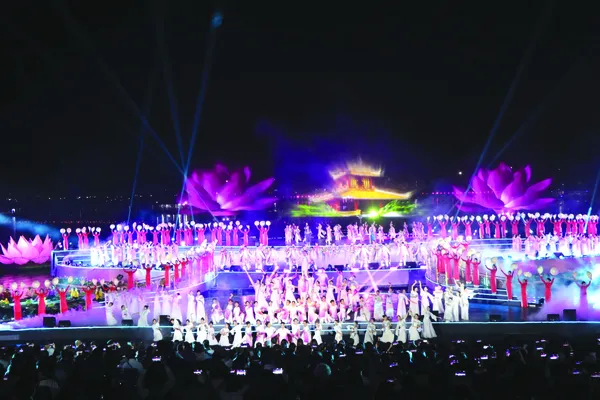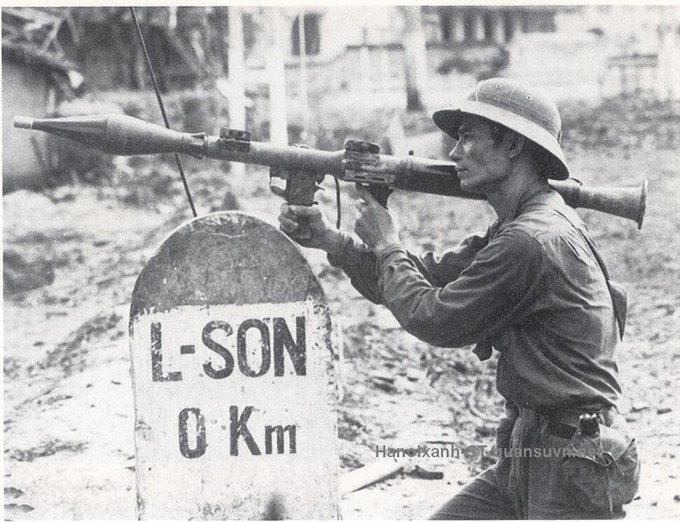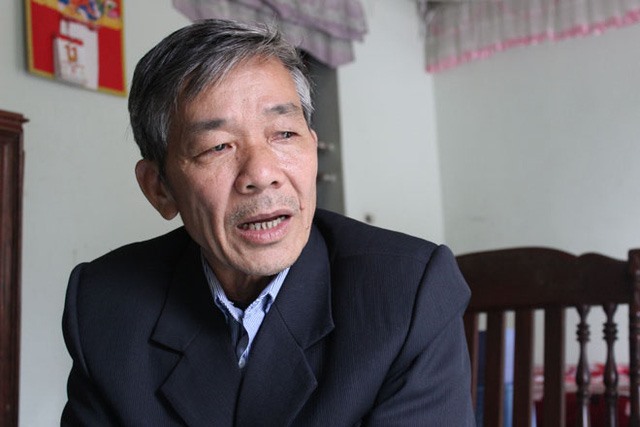 Features
Features

February will mark the 40th year since China invaded Việt Nam killing thousands of civilians including women and children.
79254215PM.jpg) |
| To the rescue: A female Vietnamese soldier rescues a three-year old child named Hoàng Thị Thu Hiền from Cao Bằng’s Hòa An battle field on February 26, 1979. The child lost her parents during the invasion launched by China in 1979 in Việt Nam’s northern provinces. VNA/VNS Photo Trần Mạnh Thường. |
By Nguyễn Thanh Hà
February will mark the 40th year since China invaded Việt Nam killing thousands of Vietnamese civilians including women and children.
The world was shocked by the Mỹ Lai massacre caused by the US army in South Việt Nam in 1968, but many people are unaware of another atrocity that took place in Cao Bằng’s Tổng Chúp Hamlet involving Chinese troops on March 9, 1979.
Forty-three women and children in the hamlet were slaughtered and dropped into a well as the Chinese troops withdrew from Việt Nam, recalled local Nông Thị Bắc who luckily escaped the massacre.
“The soldiers seemed to be competing with each other about who was the most ruthless killing innocent locals,” she said, noting that she was so afraid she ran away to the neighbouring province of Thái Nguyên.
She was one of first people to return home after the invaders withdrew.
“I was thirsty and arrived at the well to drink water but it had been filled in. I reported the case to the authorities who discovered 43 children and women, most of whom worked at a local pig farm. They had been trying to escape but were killed by the Chinese troops,” Bắc said.
Nguyễn Văn Sắc who was stationed in Tổng Chúp, recalled: “All the victims had been smashed in the head; none of them had been shot.”
One of the saddest stories was of Nông Văn Ắt, whose 9-month pregnant wife and first child were killed that day, said Sắc.
“All the victims were beaten over the head with pistols or bamboo trees, or stabbed to death with bayonets.”
Đinh Ngọc Tình’s mother Tô Thị Yến, 41, was also beaten to death with a bamboo stick by the Chinese troops that day.
When the invading troops arrived Tình and his father rushed to the forest but left his mother behind who was at work at the pig farm.
Tình recalled: “Someone told me that my mother and other workers were trying to escape when they met a group of Chinese army men. They were chained up and led to Tổng Chúp Hamlet before they were murdered and dropped into the well.”
Tình said he still clung on to hope his mother was alive until local militia recovered the bodies from the well. His mother was the last to be brought up.
Like the other victims, Tình’s mother had been tied up and blindfolded.
Tình said he could not sleep for a long time because of the image of his mother being barbarically slaughtered by the invaders 40 years ago.
Nguyễn Văn Cúc, 90, recalled when troops attacked the province at night, forcing his family and neighbours to flee to Thái Nguyên leaving everything behind.
“We were informed by the military from the loudspeakers that we should run as soon as possible. We were very scared hearing the gun shots near us. Several of my neighbours including their children were shot dead because they couldn’t keep up,” he said.
Cúc said most of those who fled faced the cold and hunger for more than one month.
“Unfortunately, my house was completely destroyed. I was trying to find a pot to cook a meal but all of my pots and pans were destroyed except a small half-burned one. I went to a stream in front of my house to get water to cook rice and I saw several corpses in the stream. Although I’d heard Chinese troops had been poisoning the stream, I did not believe before I saw it with my own eyes.
“I was so afraid I returned to Thái Nguyên before the curfew was lifted in late March. Life after the war was also terrible. We had to face the smell of decomposing bodies day and night. Many of my neighbours got sick and epidemics broke out. Others were killed by mines left by the Chinese troops,” Cúc said.
 |
| Target: A Vietnamese soldier fights against Chinese invaders in Lạng Sơn Province in 1979. VNS Photo Trần Mạnh Thường |
Vietnamese Army Major Phạm Văn Quế said he was a lieutenant and acting captain of Regiment 2 at that time.
“In late 1978, we were assigned to protect Lạng Sơn’s Đồng Đăng. On February 12, I moved back to Bắc Ninh for an appendicitis operation. The next day I was preparing to get in a car when I saw a truck carrying injured soldiers. Someone told me the Chinese troops had launched a massive attack on the area.
“I decided to return to my unit to join my comrades to fight against the Chinese invaders. When I arrived at Lạng Sơn Town, shells were dropping everywhere and locals were fleeing.
“When I arrived at my unit, I told my comrades we should fight to death,“ Quế said.
 |
| Hero: Major Phạm Văn Quế, who was involved in fierce fighting with the Chinese invaders in Lạng Sơn Province in 1979. Photo courtesy of him. |
From February 19-22, he and his soldiers fought fierce battles to regain Chậu Cảnh and Thâm Mô districts.
“The invaders numbered an estimated 600,000. That put the figures at 20-1 against us and we were running low on food and water.
“Despite this, our soldiers were brave. None of them left their positions. Many injuries were sustained but we held on,” Quế said.
Veteran army officer Nguyễn Mạnh Hùng joined the army in August 1978 when he was a student at the National Economics University. Eight months later on March 4, he was assigned to join Sao Vàng Division to protect the northern border in Lạng Sơn.
“When I arrived, the Chinese troops were pulling back, but destroying everything as they left.”
“The war did not really end. The Chinese troops still occupied some border areas and fired shells at us every day. In Lạng Sơn in 1981, there was a major fight in Cao Lộc District. The hill on our side was steep and the Chinese troops were able to build concrete bunkers to shelter, and the battle for the hill went on for nearly a month.”
82554313PM.jpg) |
| Time to reflect: Incense is offered at a ceremony to commemorate heroes and martyrs in Hà Giang’s Vị Xuyên National Cemetery.VNA/VNS Photo Bùi Cương Quyết |
The Sino-Vietnamese border war lasted from 1979-89. Vị Xuyên from the province of Hà Giang, experienced some of the fiercest fighting.
From April 1984 to May 1989, China brought more than 500,000 troops to this front.
“China chose Vị Xuyên because of its strategic position that would have threatened Hà Giang. At that time very few people knew where Vị Xuyên was,” said Major General Nguyễn Đức Huy, former deputy commander of Military Zone 2 and chief of staff of the Vị Xuyên Front from 1985-89.
Normalization
It took time but relations between Việt Nam and China were officially normalized in 1991.
Efforts have been made by both the peoples and leaders of the two countries to maintain a peaceful common border and friendship between them.
Since then the cross-border trade between the two countries had continued to grow, said an official from the Ministry of Industry and Trade.
“It is estimated that between 8,000-10,000 Vietnamese and Chinese traders go through immigration at Việt Nam’s Móng Cái border checkpoint every day,” he said.
According to statistics from the customs branch at the Lào Cai border gate, import-export turnover in the first five months of last year reached US$290 million, up 59 per cent compared with the same period in 2017.
82454106PM.jpg) |
| Packed: Crowded trucks carry goods to Nà Nưa border gate in Lạng Sơn Province.VNA/VNS Photo Thái Thuần |
 |
| Neighbours: Vietnamese-Chinese forces on a joint patrol on the Red River in Lào Cai Province.VNA/VNS Photo Hồng Ninh |
Leaders meet
During a visit to China last January, Party General Secretary Nguyễn Phú Trọng said the two countries remained important economic partners, while trade, investment and tourism ties had enjoyed growth.
Party leader Trọng said Việt Nam treasured and wanted to boost its friendship and comprehensive strategic co-operative partnership with China, and back China’s efforts to grow and contribute to peace, stability and prosperity in the region and the world.
During a visit to Việt Nam in November 2017, Chinese President Xi Jinping and Trọng reached an important consensus on deepening the China-Vietnam comprehensive strategic co-operative partnership.
They agreed that China and Việt Nam had a time-honoured friendship, and were both socialist countries under the leadership of the same political systems, similar development path and a shared future and destiny.
The two sides should learn from each other, seek common development, inject new vitality into their own socialist construction causes, and promote the sustained, sound and steady development of the China-Việt Nam partnership to make positive contributions to promoting regional peace, stability and prosperity, they concluded. VNS




